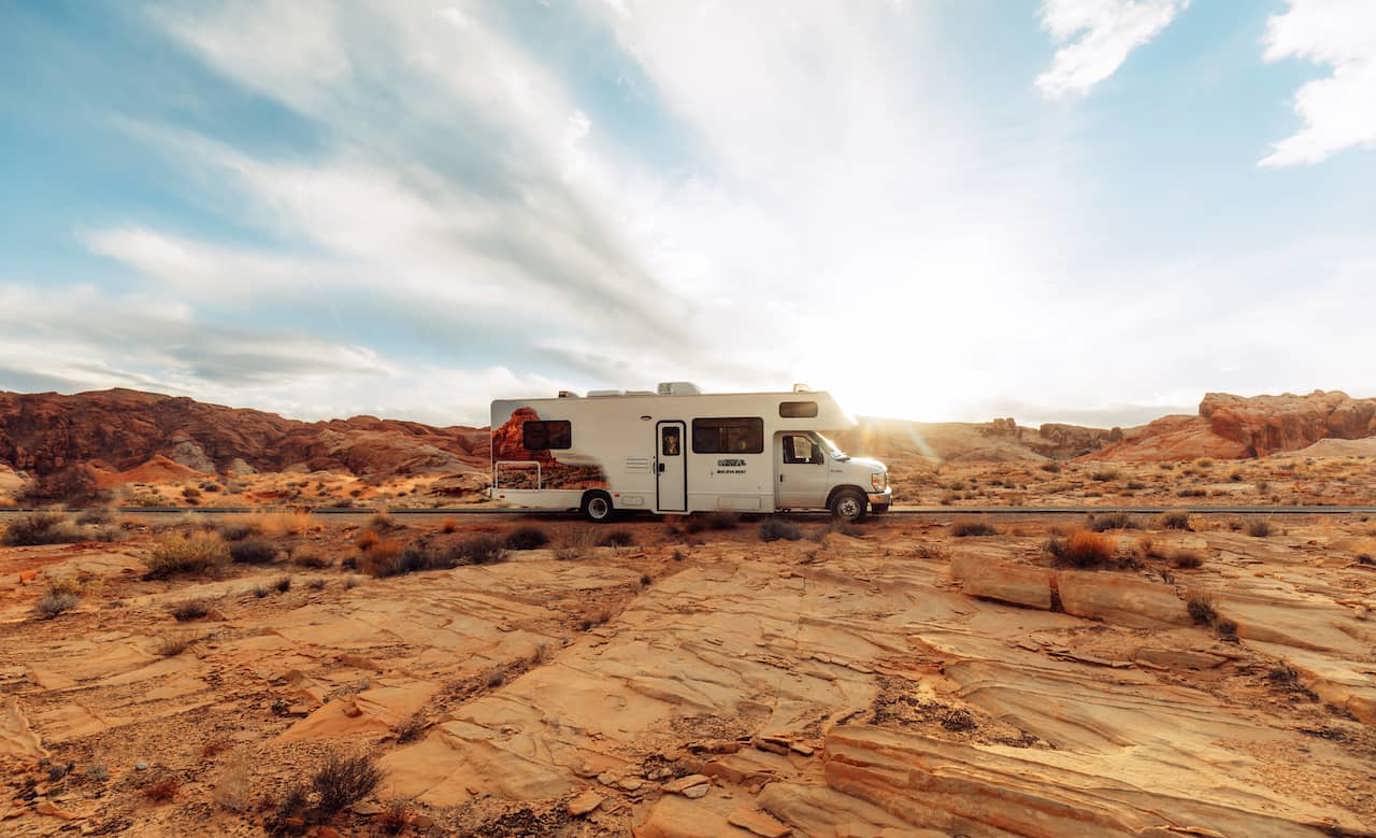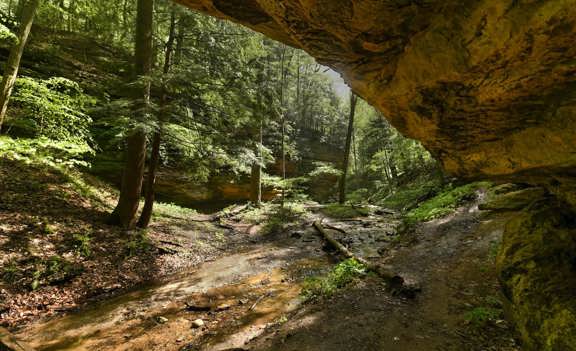
Now that it’s time to get behind the wheel of your new (or just new-to-you) RV, here are a few safety tips to keep in mind to make sure you and those around you can all stay safe.
A First-timer’s Guide To RV Safety
Driving an RV is not quite like driving your average SUV, but if you can confidently road trip in a car, you can do so in an RV. Unlike in a car, though, a bit more planning has to go into planning a safe and fun RV camping trip.
Before You Go
Many of the most valuable RV safety tips take place before you even hit the road. Before you take off, here’s what you need to know.
Practice, Practice, Practice
Don’t let the first time you’re parking your RV be when you pull up to the campsite. Find a big empty parking lot and practice essentials such as backing in, turning, and using your side mirrors, so you know where your blind spots will be. Practice driving and parking before you set off for the big road trip.
Know the Height and Weight of Your RV
It’s important to know the stats of your RV before you take off. Knowing the height of your RV is crucial to preventing a common mistake for new drivers — running into overpasses that are too low to clear. You may not be able to easily turn around when you get there, so be sure you’re looking out for overhead clearance signs (and don’t forget about low-hanging signs at the drive-thru, too).
Avoid Overloading
All RVs have a weight limit for passengers and gear on board. Do not exceed this total weight limit, or your RV will be more susceptible to tire blow-outs and experience much more wear and tear than an RV that is properly loaded.
Know Your Systems
Make sure you know how to operate all of the main systems on board before you leave. You should be familiar with how to operate any slides or pull-outs, how to use and empty the septic system, and how to use the gas that powers the kitchen.
Pre-Trip Inspection Checklist
Before your first trip, you can find a pre-trip RV safety checklist online to help you do a final walk-around. This will be a handy guide to making sure your RV is physically ready to get on the road.
Pre-Travel Checklist
Slightly different, your pre-travel checklist will help you remember all of the things you may want to pack if they are not already on board. Pay special attention to the emergency items — you’ll want to have a first aid kit, jumper cables, fire extinguisher, flashlights, etc. Just in case.
Plan Ahead
Research where you’ll be camping before you get there to ensure you have a spot to park. It is vital to tell people where you’re going. Hopefully, no one needs to find you, but it’s important for your safety that someone can.
Check Travel Conditions
Start checking travel conditions at least a few days in advance. You will want to know about weather conditions along the route and where you’re arriving. Also, you can check the route for any closures to reduce the number of surprises when it’s time to drive.
On The Road
RV safety certainly starts long before you leave, but here are tips to help you when you do get on the road.
The Law of 20%
Okay, sure, it’s not a law per se — but give yourself about 20% more everything than you would on a car road trip. Plan for about 20% longer stops, 20% more space than you need before pulling in, changing lanes, or behind the car in front of you, and even 20% more time than the same trip in a car.
Balance the Weight in Your RV
Make sure your RV is weighted pretty evenly front to back as well as side to side. This will reduce wear but also make you more stable at highway speeds.
Seatbelts
Passengers should wear a seatbelt while the vehicle is in motion — especially children. Make sure there is a forward-facing seat for any children on board so they are not running around while you travel — this will reduce distraction for the driver and keep passengers safe.
Take Breaks Often
Driving an RV can be taxing. As the driver, you have to be extremely alert, which often leads to muscle tension. To prevent drowsiness, plan to take breaks as frequently as every hour just for a few moments to get out, stretch, and let your body relax before getting back on the road.
Stay Confident
Don’t forget, you can do this! Driving an RV is not the time for aggressive driving, but don’t be timid, either.
When You Get There
Safety doesn’t stop once you’ve parked and set up camp. Here are some final tips so you can have a fun and safe RV camping trip.
Properly Stabilize Your RV
It is very important to make sure your RV is level and stable before you can start living in it. Make sure there is no danger of rolling or tipping your RV in any direction.
Know Your Location
Everyone in your camping party should know exactly where you’re staying. Many RV users use a whiteboard just inside the door to write down important numbers and the address of where they’re staying.
Make Sure You Can Call for Help
If you are going somewhere where there won’t be a reliable cell signal, make sure you have a way to call for help such as a satellite phone or other method of reaching emergency services.
Have an Emergency Plan With Your Party
All of the people in your RV should know exactly where to meet up or what to do in case of an emergency. Make a plan for the kind of dangers that may be lurking at the campsite, from floods to fires and beyond.
How Fast Can You Leave?
If you didn’t bring a second vehicle, how quickly are you able to get on the road? This is something to keep in mind and why it’s important to practice setting up and tearing down before you take your first trip.
Have a Source of Water and Food
Most campgrounds will have a source of water, but if you’re boondocking and just to have as a backup, it’s important to have a method of cleaning water on board. Similarly, you should have an emergency food stash on board that contains non-expired food that you are willing to actually eat.
Trust Your Gut
If something feels off, it’s likely off. Trust your gut and trust that the emergency plans you have in place will help you through any situation.
A Safe Trip is a Fun Trip
Armed with these safety tips, it’s finally time to get the RV trip of your dreams underway. If you feel like you need more tips or specific help with operating your RV, you can also try investing in an RV safety course. This course can be either online or in person for expert guidance in everything you need to know from basic maintenance all the way through to successful camping.
If you don’t already have your own RV, you can pick up an RV rental from Cruise America. Each of our locations across North America is full of RV experts who can do everything from helping your group find the perfect size RV to helping prepare you for the road. Before you drive away, you can be confident that each RV has passed a rigorous safety inspection, and we’ll even do a pre-trip inspection with you. Be safe, have fun, and visit your local Cruise America or browse our website to get started today.

